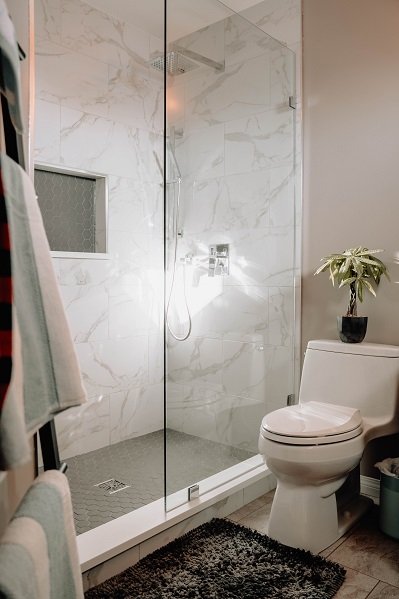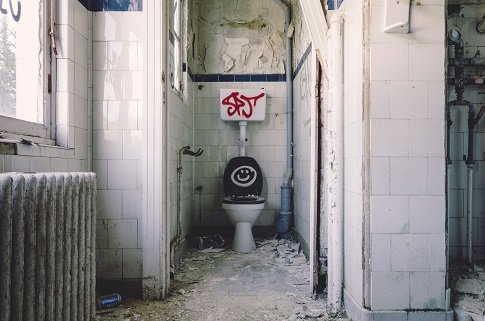The composting toilet does not require water and is therefore one of the dry toilets. You can find out how it works and why it is good for the environment here.

In contrast to a toilet, the composting toilet has a container under the toilet seat that collects the faeces instead of being connected to the sewage system. There are different models. In some models, the urine is collected separately from toilet paper and other faeces so that the liquids can be used as fertilizer or fed into a sewage system. In other models, the liquid is bound with dry wood chips or straw. These absorb the moisture and are also composted. You use the composting toilet like a seated toilet.
Compost fertilizer is made from the remains of a composting toilet. Composting turns the faeces into a valuable raw material. Composting toilets have gained particular notoriety through the social business Goldeimer . The young company works together with Viva con Agua for access to hygienic sanitary facilities for everyone in the world. At some festivals they provide composting toilets as an alternative to chemical toilets.
The composting toilet: That’s why it’s good for the environment
Composting toilets do not require water. In this way, valuable drinking water can be saved compared to toilets . Since the issue of water shortages is also becoming more relevant in Germany, compost toilets can make a major contribution: According to the Federal Environment Agency , we flush about 30 percent of our daily water requirements down the toilet. Not water-free, but still water-saving and effective are cisterns and flush valves that reduce the amount of water required.
Compared to mobile chemical toilets , which are often found at temporary events or construction sites, no dangerous substances are added to compost toilets. According to the Blue Angel , chemical toilets contain environmentally harmful biocide-containing substances. These substances kill bacteria, which poses problems for sewage treatment plants and the environment because:Sewage treatment plants clean the water with the help of microorganisms.
This is what happens to the feces from the composting toilet

The social business Goldeimer shows two ways of returning the raw materials from the faeces to natural cycles: fermentation or composting .When composting, they recommend using a compost heap whose product is only used for ornamental plants, so that even if something is not completely composted, it can be used without any hygienic problems. To produce Terra Preta , Goldeimer recommends fermentation with special microorganisms before composting.
In any case, pay attention to hygiene . Because even if the faeces can be safely returned to nature when composting is complete.it is important when emptying the toilet and processing the compost that you do not come into contact with the faeces. They can contain pathogens. This is also the reason why composting is so important before the humus is released into nature. Therefore, avoid the spread of disease by using impermeable gloves and disposing of or treating the feces responsibly.
Goldeimer himself is currently having the faeces collected at festivals recycled by the start-up Finizio – Future Sanitation . At a recycling facility that is unique in Germany, the Eberswalde-based company composts the contents of dry toilets from commercial providers and private individuals into quality-assured and hygienically safe humus fertilizers.These have enormous potential to replace climate-damaging and resource-consuming synthetic fertilizers – but have not yet been approved as fertilizers in Germany.
After years of development, Finizio was allowed to use the manufactured humus fertilizer in October 2020 for research and experimental purposes in agriculture.Over a period of three years, it will be examined how well the natural fertilizer performs in comparison to conventional products and the data will be used for the application for approval as a fertilizer. In this way, resources should continue to be used and a contribution made to the circular economy .
Buy a composting toilet
With urine-diverting toilets, urine and stool are collected separately with the help of a special insert and can therefore be disposed of more easily. The urine can be disposed of in any toilet (or fertilize your own garden). “Solids” go – usually mixed with litter – in the household waste or on the compost.
The website www.blog2soft.com provides further information and lists various models of urine-diverting toilets, as well as toilet kits and accessories for dry toilets for campers, mobile homes, garden sheds or tiny homes.